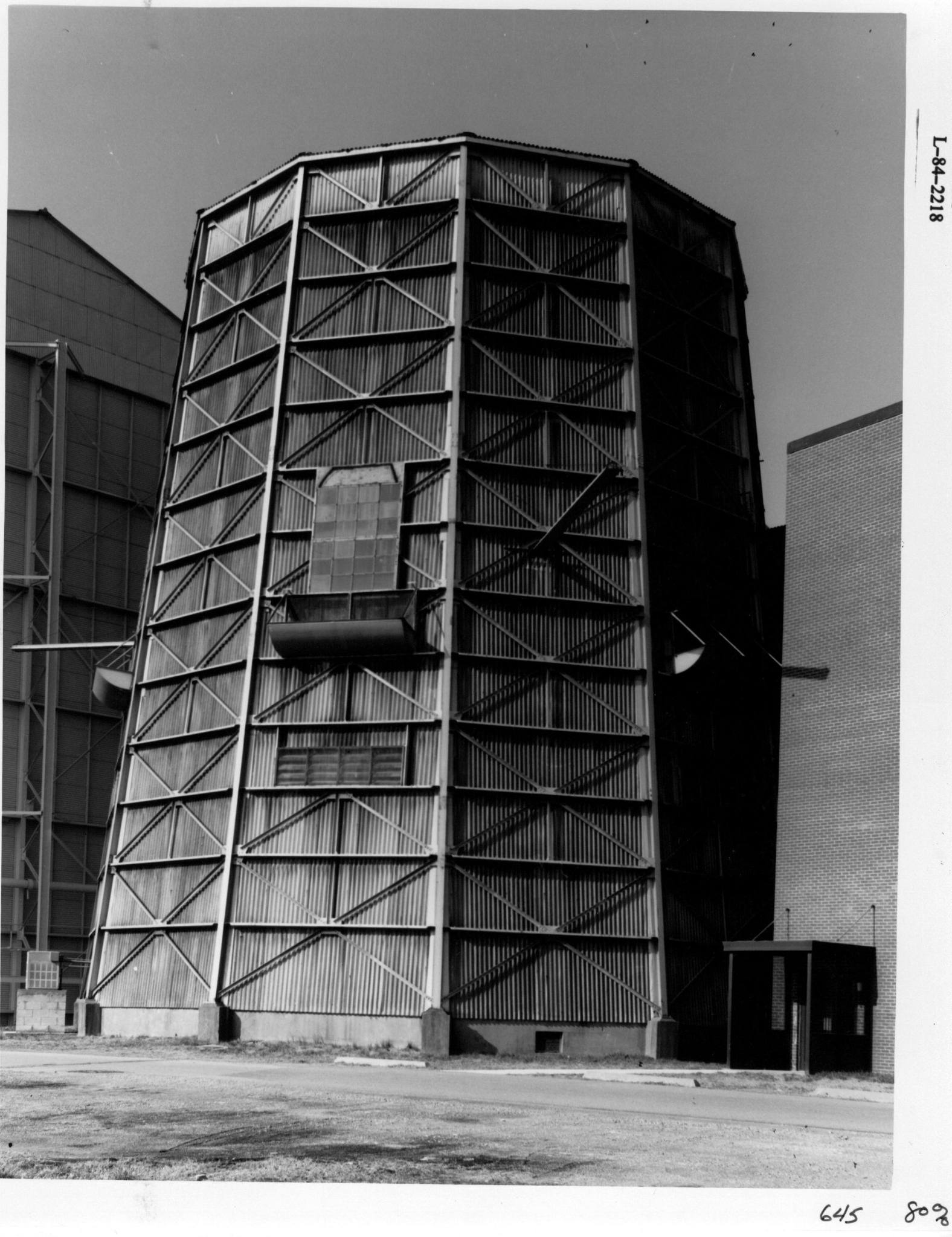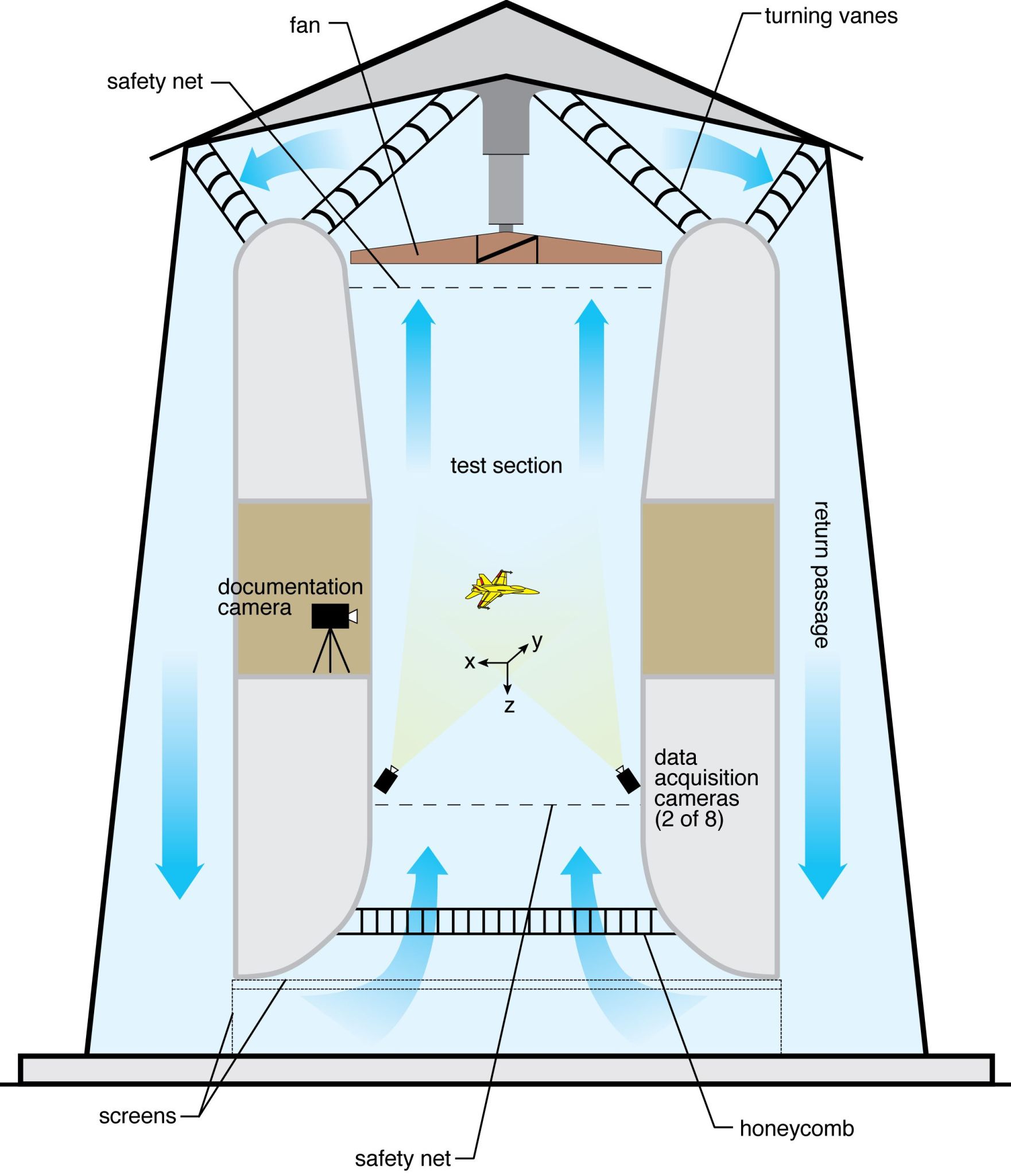Quick Facts
Year Built: 1941
Historic Eligibility: National Register Eligible
Important Tests: Tailspin Research
History
One of the first life-threatening problems of heavier-than-air flying machines – the dreaded tailspin – demanded early attention from designers and pilots of the day.
The international aeronautical-engineering community initially knew very little about the primary factors that influenced the spin, or the relative effectiveness of piloting methods to recover from spins.
Langley’s staff initially evaluated the use of catapult-launched models in an airship hangar that was about 105-feet high. After using the method to study spins, the Langley staff concluded that the catapult technique was time consuming and resulted in frequent damage to the fragile models. They then constructed a 5-foot diameter vertical tunnel in the late 1920s to provide for measurements of the aerodynamic loads on aircraft models during simulated spinning motions. The model was not in free flight, but was driven by an electric motor. Airflow in this early tunnel was vertically downward, and tests were directed at the aerodynamics encountered in the spin.
Langley then proceeded to successfully design and construct a 15-foot free-spinning tunnel in 1934 which permitted researchers to observe the spin and recovery motions of small free-flying balsa models. Operations of the 15-foot tunnel began in 1935. The airflow in the 15-foot tunnel was vertically upward to simulate the downward velocity of an aircraft during spins.
At the beginning of a typical test, the model was mounted on a launching spindle at the end of a long wooden rod held by a tunnel technician. A tunnel operator increased the airspeed in the vertical tunnel so that the air forces on the model equaled its weight. At this point, the model automatically disengaged from the spindle and continued to float as the airspeed was continuously adjusted to maintain the model’s position at eye level in the test section. The model’s control surfaces were moved from pro-spin settings to pre-determined anti-spin settings by a clockwork mechanism, and the rapidity of recovery from the spin was noted. After the test was completed the tunnel airspeed was decreased and the model was allowed to settle into a large net at the bottom of the test section. The model was then recovered with a long- handled clamp and prepared for the next test.
In 1941 Langley began operations of a new 20-foot spin tunnel which replaced the 15-foot tunnel and was in continuous testing until its closure in xxxx. The facility featured a vertically-rising test airstream into which free-flying unpowered aircraft models were hand-launched to evaluate spinning and spin recovery behavior, tumbling resistance, and recovery from other out-of-control situations. The tunnel was a closed-throat, annular return wind tunnel with a 12-sided test section that was 20-feet across by 25-feet tall. The test section air speed could be varied from 0 to approximately 85 feet/second. Airflow in the test section was controlled by a 3-bladed fan powered by a 400-horsepower direct current motor located in the top of the facility. The airspeed control system was designed to permit rapid changes in fan speed to enable precise location of the model in the test section.
The models for free-spinning tests in the Langley 20-foot Vertical Spin Tunnel were hand launched with a spinning motion into the vertically-rising airstream and a tunnel operator controlled the airspeed to stabilize the spinning model in view of observers. Data measured included angle of attack, spin rate, and control positions. Spin-recovery characteristics were determined by remotely actuating the control surfaces of the model. Images of the stabilized spinning motions and the number of turns required for recovery were documented on high-resolution video.
This versatile testing facility was also used to determine the size and effectiveness of emergency spin-recovery parachute systems for flight-test aircraft by deploying various parachute configurations from the spinning model. In addition, unconventional maneuvers such as uncontrollable nose-over-tail gyrations known as “tumbling” were investigated.
In its more recent history the tunnel was also used to evaluate the stability of vertically descending configurations including munitions and parachute/capsule systems. The spin tunnel supported the development of nearly all U. S. military fighter and attack aircraft, trainers, and bombers during its history, with over 600 projects to date.
Search the NASA Technical Reports Server for additional examples of research conducted in this facility. Examples include:
- The Vertical Wind Tunnel of the National Advisory Committee for Aeronautics
- Compilation of Test Data on 111 Free-Spinning Airplane Models Tested in the Langley 15-Foot and 20-Foot Free-Spinning Tunnels
- Status of Spin Research for Recent Airplane Designs – NASA Technical Reports Server (NTRS)
Related Materials
1942 Spin Tunnel Schematic
List of Spin Tunnel Models (1999)
Langley Memorial Aeronautical Laboratory Descriptions of 15-Foot and 20-Foot Spin Tunnels
































